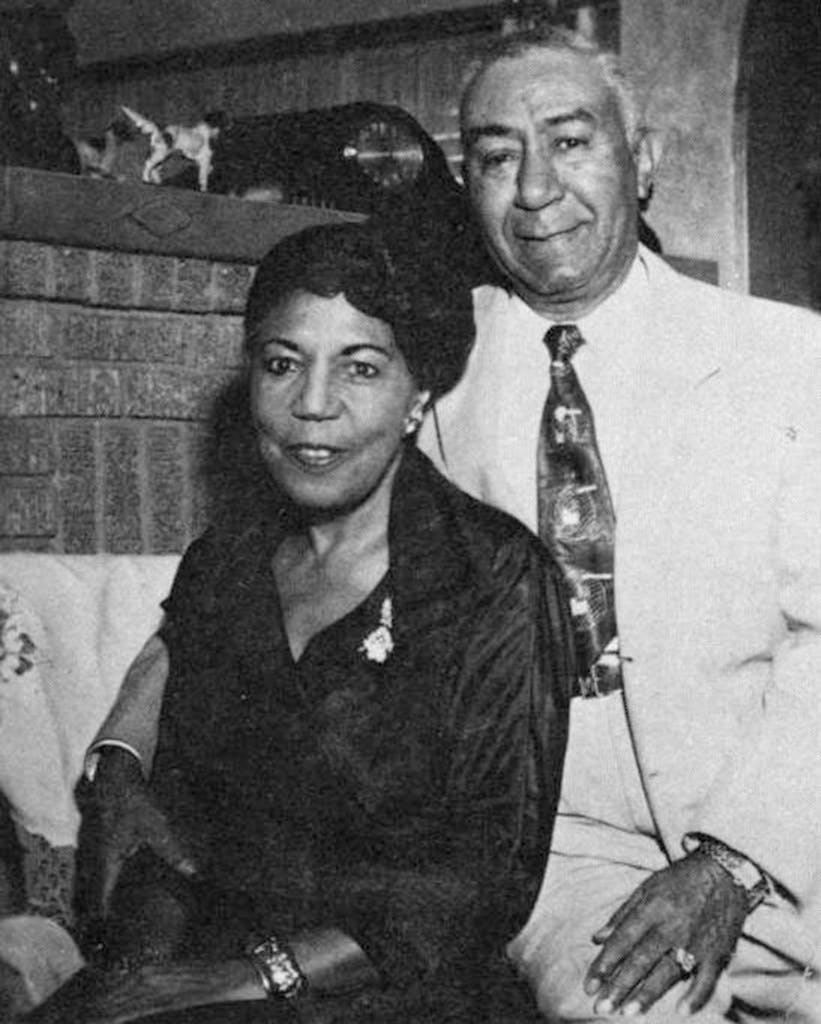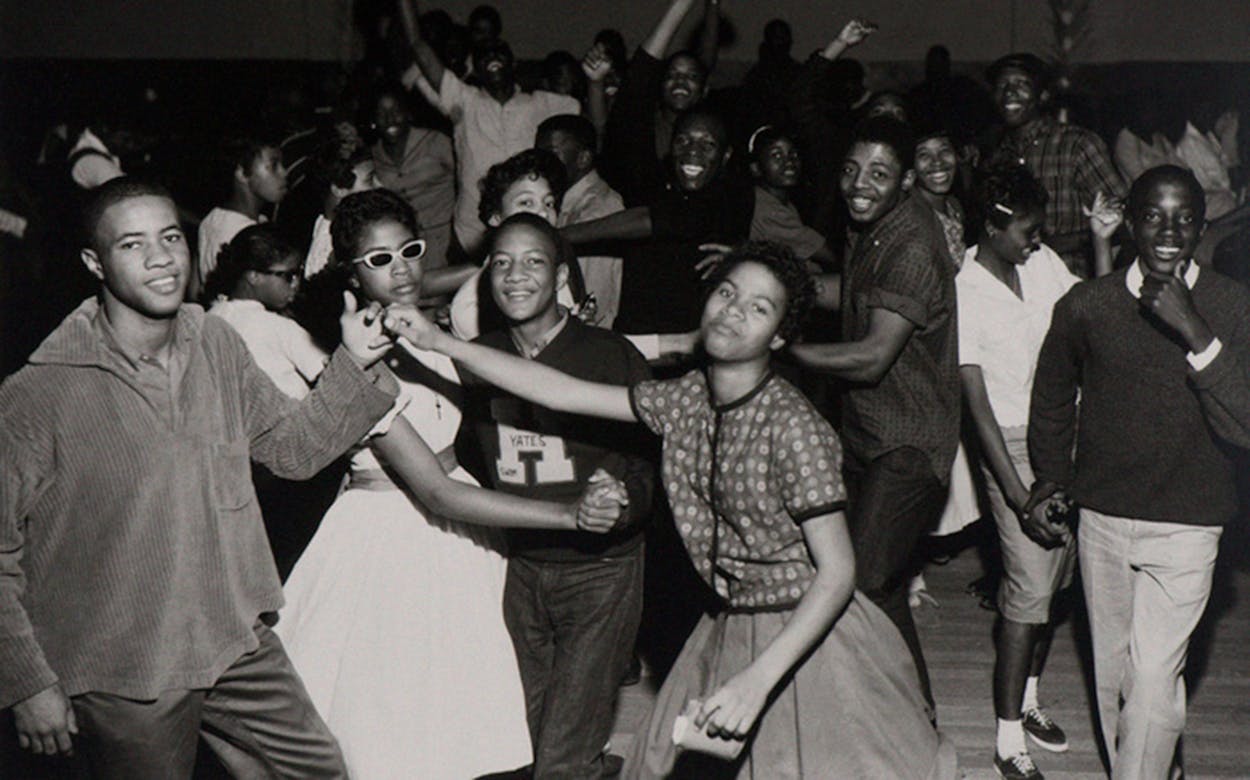The great jazz and blues singer Jewel Brown made her Eldorado Ballroom debut in 1949, at the age of twelve. The Eldorado was then one of the country’s premier Black music venues, playing host to Duke Ellington, Count Basie, B. B. King, and a murderers’ row of other musical giants. But to Brown, who grew up in Houston’s predominantly Black Third Ward neighborhood, the “Rado” was just the local nightclub—the place where her older sisters would go dancing on Saturday nights.
“You couldn’t keep them out of there on the weekend,” Brown recently recalled with a chuckle. “They would clean up the house real good on Saturday so that when Daddy came home in the afternoon he would give them the okay to go. They just had to come in early enough to go to church the next day.”
Brown performed as part of a talent show lineup that included a comedian with the stage name of Caledonia and a dance team called Tubb and Orr. Even today, at the age of 85, Brown can distinctly remember finishing her set and returning to the dressing room, where Caledonia was getting ready to go on. “She said, ‘They told me an amateur was opening up the show. You ain’t no amateur—you’re a professional!’ ” The comedian was right: Brown would go on to enjoy a celebrated career that included a stint with Louis Armstrong’s band, from 1961 to 1968, during which she toured the world and performed on national television. She’s released records with Armstrong, Milton Hopkins, and Dizzy Gillespie. But she always came back to the Eldorado, performing countless times at her neighborhood nightclub before it closed in the early 1970s, the victim of changing musical tastes and the neighborhood’s slow decline.


This month, the Eldorado will celebrate its grand reopening, After a three-year-long, $9.7 million renovation, the venue has been restored to its midcentury glory, with modern amenities like an elevator, a state-of-the-art HVAC system, and a second-floor outdoor deck offering spectacular views of downtown Houston. Located across the street from Emancipation Park, which received a $34 million facelift in 2017, the Eldorado is poised to retake its place at the geographical and cultural heart of Third Ward.
“This was the Savoy Ballroom of the South—the premier entertainment space for not only Black people, but all the people who enjoy the type of music that was performed there,” said Eureka Gilkey, the executive director of Project Row Houses, a Third Ward–based nonprofit that now owns the Eldorado and raised the money for its restoration via a major capital campaign. “It’s also a space that celebrated all types of milestones—baby showers, graduations, weddings. It’s a gathering place for the community.”
The Eldorado first opened its doors in 1939. It was the brainchild of Anna and Clarence Dupree, Black entrepreneurs who dreamed of creating, in Anna’s words, “a showcase for the great Black entertainers of the era.” Rice University–educated architect Lenard Gabert designed a striking two-story art moderne building at the corner of Elgin and Dowling Street (now Emancipation Avenue) that resembled the sleek prow of an ocean liner. The ballroom occupied the second floor, while the first floor was subdivided into retail space for Black-owned businesses. In addition to Saturday night dances featuring a house band and visiting musicians, the Eldorado hosted all-ages talent shows that helped launch the careers of local musicians like Jewel Brown, Johnny “Guitar” Watson, and Joe “Guitar” Hughes. In its postwar heyday, the Eldorado became known as the “Home of Happy Feet”—the place to go for dancing, drinking, and carousing. Compared to the former Bronze Peacock nightclub in Houston’s Fifth Ward neighborhood, which became known for gambling and even less savory activities, the Eldorado cultivated a more wholesome reputation—which isn’t to say people didn’t have fun.

“It was the hottest place,” Brown remembered. “People would get dressed up. Women would have on their baby-doll shoes, and men would have on their drape pants with the chains hanging out their pockets. Everybody would be on that dance floor. It seemed like the floor would cave in from all that dancing.” As part of the recent renovation, Houston architecture firm Stern and Bucek restored the Eldorado’s famous wooden dance floor, giving a new generation of dancers the chance to strut their stuff on the glossy boards. Principal architect David Bucek used old drawings and photographs as references to ensure that the renovation was historically accurate. “Our big goal was, anything original about the building we wanted to maintain and protect,” Bucek said. “We’ve taken it back largely to what it was like in 1939.”
Roger Wood, the author of several books about Houston music history, hailed the Eldorado renovation as a major step toward recognizing the Bayou City’s cultural heritage. “In a city like Houston, where everything gets knocked down and rebuilt, there are very few monuments to the past,” he said. “This is going to be a site that honors the past while really doing some brilliant things for the present and the future.” Gilkey, the Project Row Houses executive director, said the new Eldorado will fill a void in Houston’s cultural landscape. With capacity for around three hundred people, the ballroom offers the kind of intimacy available in few other local performing arts venues. The first floor will be occupied by an art gallery and restaurant, as well as a community center managed by Project Row Houses. “We will run the gamut in terms of offerings,” she promised.
In February, I received a tour of the Eldorado from senior construction superintendent Kenneth McGowan. As we navigated our way past workers installing acoustic tiles and sanding a 27-foot bar, McGowan pointed out numerous original elements that had been uncovered during the renovation: red-brick walls, a grand wooden staircase, hand-painted bathroom tiles. In order to maintain its designation as a historical building, the architects had to leave at least 95 percent of the structure untouched. “This job has become a labor of love, literally,” McGowan said. “I’ve personally worked after hours, all by myself, hanging drywall, sheetrock, doing millwork, everything.” Occasionally older folks from the neighborhood will stop by to share their memories. “They’ve told me stories about graduation parties and proms from the 1940s and ’50s. I’ve seen pictures of people dressed up to go dancing. They’re so glad that it’s not being torn down.”
So is Jewel Brown. Now semi-retired, the singer still lives in Third Ward, just eight blocks from the Eldorado. She released her latest album, “Thanks for Good Ole’ Music and Memories,” in January, and is looking forward to performing at the Eldorado again. “I love to entertain people,” she said. “That’s my joy in life.”
- More About:
- Texas History
- Style & Design
- Music
- Jazz








